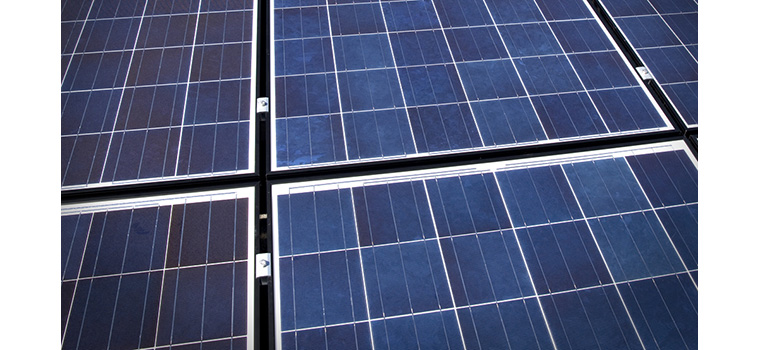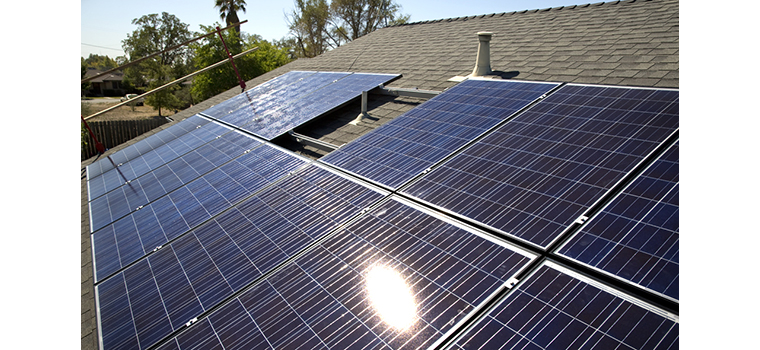The California Energy Commission (CEC) has updated energy efficiency building standards to require that all newly constructed homes be outfitted with solar systems beginning in 2020.

The California Energy Commission has updated energy efficiency building standards to require that all newly constructed homes be outfitted with solar systems beginning in 2020.
BY BILL PICTURE
Published: June, 2018
The California Energy Commission (CEC) has updated energy efficiency building standards to require that all newly constructed homes be outfitted with solar systems beginning in 2020. The annual reduction of greenhouse gas emissions resulting from the new requirement is expected to be the equivalent to taking 115,000 gas-burning automobiles off California’s roads.
“Under these new standards, buildings will perform better than ever and contribute to a reliable grid,” said Commissioner Andrew McAllister, in a written statement. McAllister is CEC’s leader on energy efficiency.
“The buildings that Californians buy and live in will operate very efficiently while generating their own clean energy,” McAllister said. “They will cost less to operate, have healthy indoor air and provide a platform for ‘smart’ technologies that will propel the state even further down the road to a low-emissions future.”
Easing into new requirements
Energy efficiency building standards are updated every three years. These latest standards are the result of a yearlong series of workshops and meetings where stakeholders were invited to weigh in on proposed changes. The California Building Industry Association (CBIA) was among those stakeholders, and strongly supports the solar requirement despite the expected increase to construction costs and home prices.
Homes built to the new standards will cost about $9,500 more to construct, but the CEC says homeowners can expect to save about $19,000 in energy and maintenance costs over the course of a standard 30-year mortgage. That’s roughly an extra $40 tacked onto the monthly mortgage payment for an average home, but $80 less spent each month on heating, cooling and lighting bills.
“The California Energy Commission has struck a fair balance between reducing greenhouse gas emissions while simultaneously limiting increased construction costs,” said CBIA president and CEO Dan Dunmoyer. “We thank the commissioners and their staff for working with the building industry during the past 18 months and adopting a set of cost-effective standards that ensures homebuyers will recoup their money over the life of the dwelling.”
CEC spokesperson Amber Pasricha Beck points out that it’s much cheaper to install a solar system while a home is being built than it is to add it after the fact. “Adding solar to an existing home can be costly,” she said. “And not every home is a candidate for solar.”
Building energy efficiency standards adopted in 2010 paved the way for the latest standards by requiring that new homes be built solar-ready. That is, rooftops of new buildings have to be free of obstructions so that solar panels can be added later on down the road.
“We have been building to this for over 10 years,” Beck added. “We have had a goal to make homes in California zero net energy by 2020. Since 2007, every update of the standards has moved forward with making homes as efficient as possible, while remaining cost effective. The 2016 standards were another large leap in that direction.”
Pierre Delforge, director of high-tech sector energy efficiency at the Natural Resources Defense Council, called the new solar requirement “groundbreaking.” “The new building energy codes will save energy, lower customer bills, keep homes comfortable in increasing heat waves and reduce pollution from California’s homes and buildings—which account for a quarter of the state’s greenhouse gas emissions,” he said. “Cutting energy waste and putting solar panels on every new home built in California should be a shining example to the rest of the world on how to act against climate change.”
Is adding solar a smart investment?
Lawrence Berkeley National Laboratory conducted a study recently to determine whether adding solar panels to homes actually increased property values. Homes with solar panels are selling for more money in California, but LBNL wanted to know if that was the case outside the state.
Researchers analyzed the selling prices of 20,000 homes in Connecticut, Florida, Massachusetts, Maryland, North Carolina, New York and Pennsylvania and determined that home buyers were willing to pay more for properties with solar panels. The study showed that in California, every watt of solar power added about $4 to a home’s value; that figure was $3 per watt elsewhere in the country. So a standard five-kilowatt solar system (which generates 5,000 watts of power) added $20,000 to the selling price of a home in California, and $15,000 in other states.
The 2019 Building Energy Efficiency Standards, which take effect on January 1, 2020, include a host of other changes. Among them is an update to thermal envelope standards. Higher-performance attics, walls and windows will help trap heat during winter months and keep hot air out during the warmer summer months, resulting in reduced heating and cooling needs. New lighting requirements for non-residential buildings will also help occupants save electricity by maximizing the use of LED technology to illuminate indoor and outdoor spaces. Another update requires high-efficiency air filters be used in residential and nonresidential buildings to trap hazardous particulates from outdoor air and indoor cooking, improving indoor air quality.
The CEC might have put itself out on a limb with these updated requirements given the current administration’s plan to roll back environmental regulation that it says stifles economic growth. But Beck said it’s as important as ever for California to stay on the path to sustainability that it committed to decades ago.
“California has a long history of protecting the environment,” she said, “and we will continue to do this because it is a win-win for residents.”

These latest building standards are the result of a yearlong series of workshops and meetings where stakeholders were invited to weigh in on proposed changes.

Homes built to the new standards will cost about $9,500 more to construct, but the CEC says homeowners can expect to save about $19,000 in energy and maintenance costs over the course of a standard 30-year mortgage.

